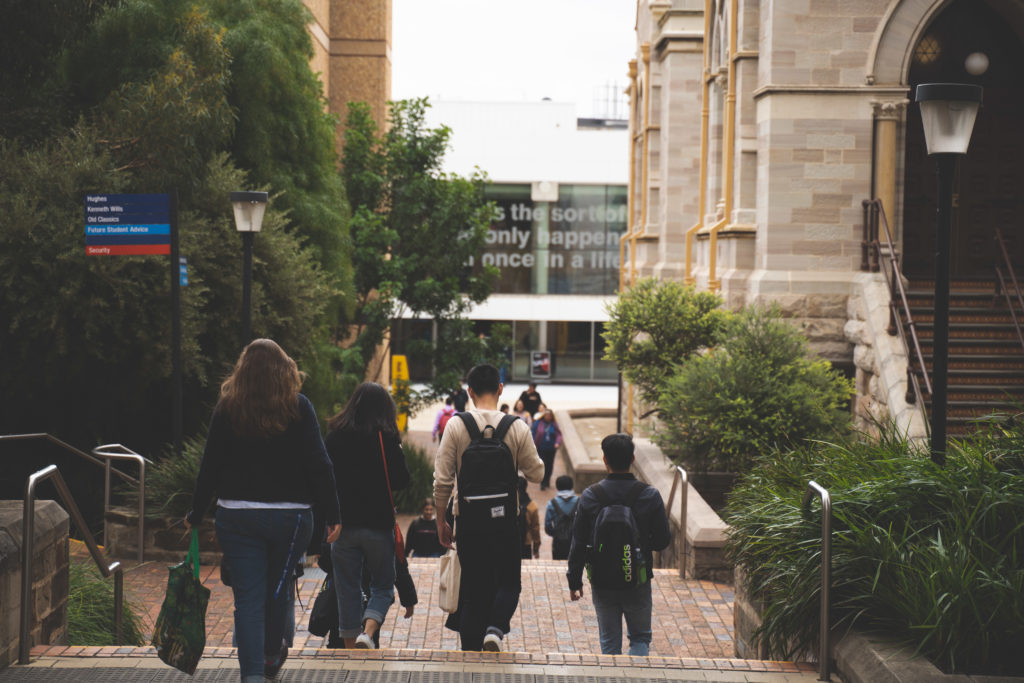While you might not have heard the term ‘Group of Eight (Go8) Universities’ before, you might be familiar with the concept!
Perhaps a better question is: ‘What is the equivalent of Ivy League schools in Australia?’.
What are Go8 Universities?
Like America’s Ivy League or the United Kingdom’s Russell Group, Go8 Universities are Australia’s top-ranking universities. The group has a strong research focus, with almost 70 per cent of Australia’s research conducted by these universities. Impressively, every Australian Nobel Prize winner so far has been associated with one of the Go8 universities!
List of Go8 Universities in Australia
- The University of Melbourne, Victoria
- Australian National University, Australian Capital Territory
- The University of Sydney, New South Wales
- The University of Queensland, Queensland
- The University of Western Australia, Western Australia
- The University of Adelaide, South Australia
- Monash University, Victoria
- The University of New South Wales, New South Wales
What does it mean if I study at a Go8 University?
The Go8 was officially incorporated in 1999 and continues to house the highest-ranked Australian universities on a global scale. All eight members are ranked in the world’s top 150 universities, with seven of the members featuring in the top 100.
So what do the Go8 Universities’ rankings actually mean?
Due to a rise in students travelling overseas to study and increasing global economic competition, there was a market need to create a universal global benchmarking system. In answer to this, the Academic Ranking of World Universities (ARWU) was launched in 2003.
Now, there are multiple ranking systems used on a global scale, each considering different criteria and outcomes to generate their rankings:
Academic Ranking of World Universities (also known as the Shanghai Rankings) was the first of its kind and uses these objective indicators to rank world universities based on their research excellence.
QS World University Rankings launched one year after the ARWU and is the only ranking system to provide specific subject rankings rather than a singular ranking for each education provider. However, QS Rankings’ focus on reputational surveys rather than the quality of delivered research has been reviewed.
Times Higher Education (THE) World University Rankings separated from QS Rankings in 2010 and uses 13 objective indicators to determine university rankings. The number of indicators makes THE rankings’ methodology one of the more comprehensive options, but it has been argued that their consideration of institutional income and citations can skew outcomes.
The Go8’s global and local rankings see them receive 73 per cent of Australia’s Category 1 funding, resulting in the group spending around $6 billion on research annually. They also award half of all doctorates in Australia.
Therefore, studying at a Go8 University will provide you opportunities to learn and research at a well-funded, world-renowned education institution, which is a great option if their resources and course specialties align with your interests and chosen field.
Whilst important, rankings and funding should not be the only reason you decide to enrol at a particular university. Taking the time to find the perfect education provider to help you reach your particular goals and dreams should be the aim, regardless of which network they are part of. Use this handy course search resource to discover the right fit for you!
What are the other university networks in Australia?
Australian Technology Network was established in 1999 and boasts a strong history of innovation, enterprise and industry. Their five universities are responsible for teaching 17 per cent of all domestic and 16 per cent of all international students in Australia and pride themselves on producing job-ready graduates.
Innovative Research Universities was established in 2003 to enhance higher education outcomes. These seven universities are committed to advancing local and global communities through education, opportunities, and translational research.
NUW Alliance joins together four leading Australian universities to service 194,000 students across 37 locations within New South Wales. Their focus is to seek out grand-scale collaborations which impact and benefit local NSW communities.
Regional Universities Network was formed in 2011 as part of the Australian Government’s regional focus for higher education. The seven universities work towards three objectives: providing policy advice relating to tertiary education in regional areas, strengthening and amplifying regional universities’ contributions, and building institutional capacity and sustainability within regional tertiary education.
Sandstone Universities are an informal group comprised of Australia’s oldest tertiary education providers. The six universities are home to buildings constructed primarily of sandstone, hence the group’s name.
Red Brick Universities are named after the UK’s Red Brick Universities and relate to the three universities constructed after the Sandstone Universities group. These institutions tend to have a civic focus.
Verdant Universities are also known as Gumtree Universities and relate to education providers built in the 1960s and 1970s. These campuses are generally located close to bushland and nature reserves and offer beautiful vegetative campuses.





